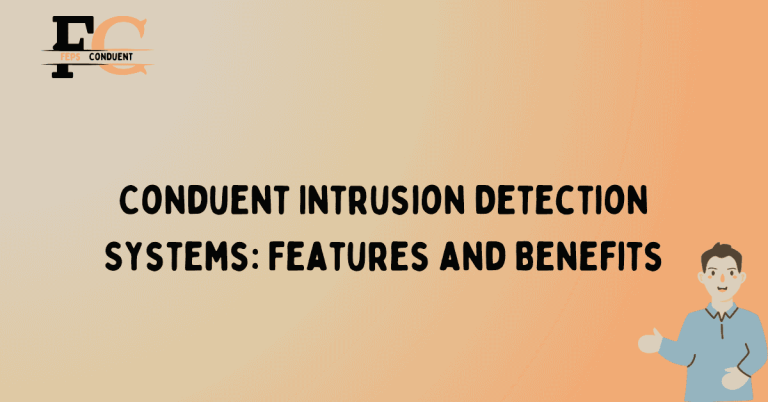Conduent Risk Assessment: Identifying Security Threats

In today’s fast-paced digital world, businesses are constantly exposed to various security threats that can jeopardize their data, operations, and ultimately, their reputation. At Conduent, we understand the importance of proactive risk assessment and are committed to helping organizations identify and mitigate these threats.
Types of Security Threats
In today’s digital world, businesses face various security threats that can pose serious risks to their data and operations. Understanding the different types of security threats is crucial for organizations to effectively mitigate these risks.
Malware Attacks
Malware refers to malicious software designed to disrupt, damage, or gain unauthorized access to computer systems. This includes viruses, worms, ransomware, and spyware. Malware attacks can lead to data breaches, financial loss, and reputational damage.
Phishing Scams
Phishing scams involve fraudulent attempts to obtain sensitive information such as passwords, credit card details, or social security numbers. Attackers often disguise themselves as trustworthy entities through emails, websites, or phone calls, tricking individuals into revealing their confidential information.
Denial of Service (DoS) Attacks
Denial of Service attacks aim to overwhelm a system or network, rendering it unavailable to users. Attackers flood the target with a large volume of traffic or requests, causing a disruption in normal operations. DoS attacks can disrupt business services, resulting in financial losses and customer dissatisfaction.
Insider Threats
Insider threats occur when individuals within an organization misuse their authorized access to compromise security. This can include employees intentionally leaking sensitive information, sabotaging systems, or stealing data for personal gain. Insider threats can be challenging to detect as the perpetrators have legitimate access to the organization’s resources.
Social Engineering Attacks
Social engineering attacks exploit human psychology to manipulate individuals into divulging confidential information or performing actions that may compromise security. Tactics such as impersonation, deception, or coercion are used to trick individuals into providing sensitive data or granting unauthorized access.
Data Breaches
Data breaches occur when unauthorized individuals gain access to sensitive or confidential information. This can happen due to weak security measures, human error, or targeted cyberattacks. Data breaches can lead to financial loss, legal consequences, and severe damage to an organization’s reputation.
Mobile Device Vulnerabilities
With the increasing use of mobile devices, these devices have become attractive targets for cybercriminals. Mobile device vulnerabilities include insecure wireless connections, unauthorized access to data, and malware specifically designed for mobile platforms. Organizations need to implement robust security measures to protect their mobile devices and the data stored on them.
Importance of Proactive Risk Assessment
Proactive risk assessment is crucial for organizations to identify and mitigate security threats effectively. By conducting regular risk assessments, businesses can:
Identify Vulnerabilities
A comprehensive risk assessment enables organizations to identify potential vulnerabilities within their systems and networks. This helps in understanding the weaknesses that attackers may exploit and allows businesses to implement appropriate security measures.
Prioritize Security Measures
Through risk assessment, organizations can prioritize security measures based on the level of threat posed by different vulnerabilities. This ensures that resources are allocated effectively to address the most critical security risks.
Compliance with Regulations
Many industries have specific regulations and standards related to data security and privacy. Proactive risk assessment helps organizations ensure compliance with these regulations, avoiding legal consequences and potential financial penalties.
Protect Reputation
A security breach can severely damage an organization’s reputation and erode customer trust. By conducting regular risk assessments and implementing appropriate security measures, businesses can protect their reputation and maintain customer confidence.
Stay Ahead of Evolving Threats
The threat landscape is constantly evolving, with attackers finding new ways to exploit vulnerabilities. Regular risk assessments enable organizations to stay updated on emerging threats and proactively implement measures to mitigate these risks.
FAQs
What is Conduent Risk Assessment?
Conduent Risk Assessment is a process of identifying and evaluating potential security threats and vulnerabilities within an organization’s systems and infrastructure.
Why is Risk Assessment important?
Risk Assessment is important because it helps organizations understand their vulnerabilities and potential security threats, allowing them to implement effective security measures to mitigate those risks.
What are the steps involved in Conduent Risk Assessment?
The steps involved in Conduent Risk Assessment include identifying assets, assessing threats, evaluating vulnerabilities, calculating risks, and implementing risk mitigation measures.
How can Conduent Risk Assessment help in preventing security breaches?
Conduent Risk Assessment helps in preventing security breaches by identifying potential threats and vulnerabilities, allowing organizations to implement necessary security controls and measures to minimize the risk of breaches.
How often should Conduent Risk Assessment be conducted?
Conduent Risk Assessment should be conducted regularly, ideally on an annual basis, or whenever there are significant changes to the organization’s systems or infrastructure.
Who is responsible for conducting Conduent Risk Assessment?
The responsibility for conducting Conduent Risk Assessment usually lies with the organization’s IT department or a dedicated risk management team.
Conclusion
In today’s fast-paced digital world, proactive risk assessment is essential for organizations to identify and mitigate security threats effectively. By understanding the different types of security threats and conducting regular risk assessments, businesses can protect their data, operations, and reputation from potential harm.






